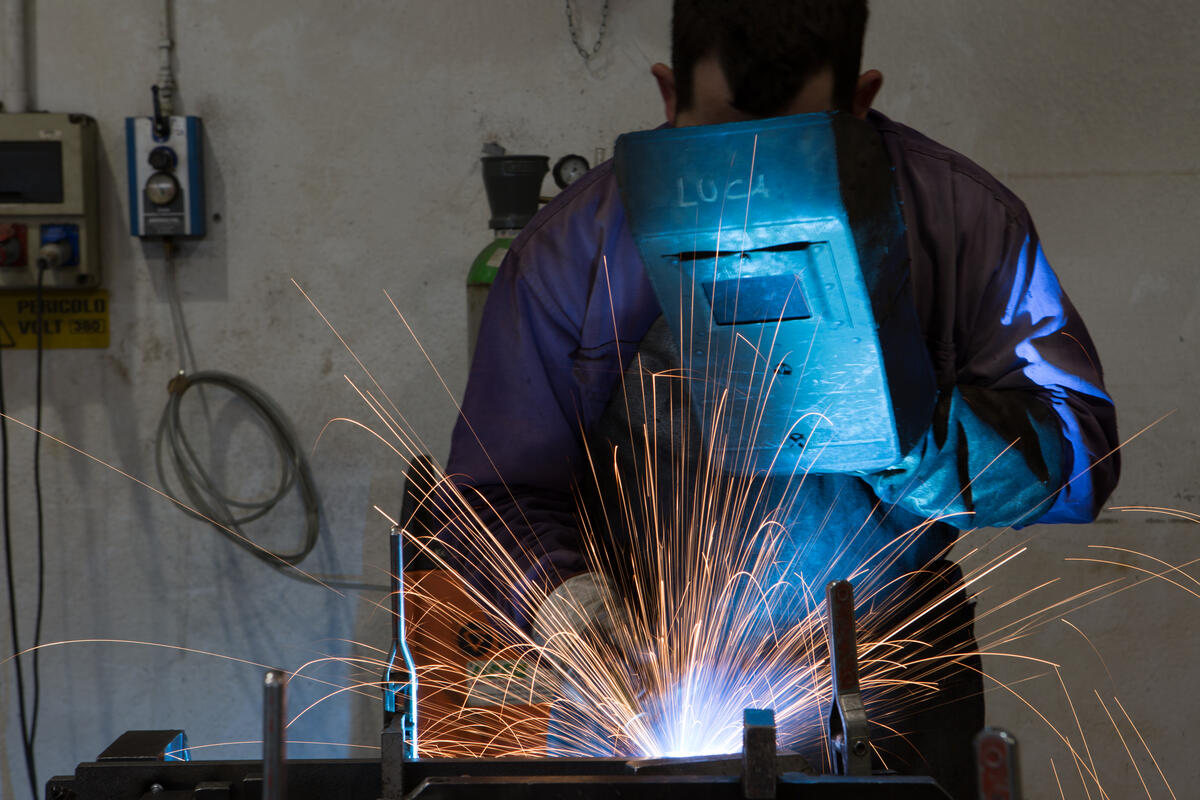
15
Jun
2022
WHICH CERTIFICATIONS ARE REQUIRED FOR WELDING?

Weld quality and joint strength can only be checked indirectly.
Welding is therefore defined as a Special Process, as it would not be possible to have direct control over the quality and strength of the joint except by carrying out destructive tests with consequent compromising of the component made.
Therefore, in order to guarantee the quality of the welding, it is necessary to implement an Indirect Control system through Process Control.
Welding is therefore defined as a Special Process, as it would not be possible to have direct control over the quality and strength of the joint except by carrying out destructive tests with consequent compromising of the component made.
Therefore, in order to guarantee the quality of the welding, it is necessary to implement an Indirect Control system through Process Control.
The aspects that require appropriate indirect control include:
- The certification of welders (welder's licence).
- The certification of welding operators (welding operator’s licence).
- The qualification of welding processes (process certification).
The use of personnel with the correct certifications is increasingly becoming a mandatory requirement for companies that manufacture welded products, where it is necessary to guarantee certain requirements such as strength, toughness, durability and aesthetic appearance. The qualification also provides evidence of the competence and skills of personnel involved in the execution of welded joints.
The roles for which the afore-mentioned certifications are envisaged are: the welder, a person who manually performs the welding operation, and the welding operator, a person who performs fully mechanised fusion welding.
UNI EN ISO 9606 defines how to obtain certification for the qualification of welders of metal materials with arc processes, while UNI EN ISO 14732 is for the qualification of welding operators. These certifications, determined by European standards, have as their purpose the Welder’s - Welding Operator’s Licence.
What is the function of the Welder's and Welding Operator's Licence?
The licence was designed to verify and standardise, at a national and international level, the welder's ability to perform welds in a constant and repetitive manner with a level of quality deemed acceptable.
The licence is issued following the passing of a test, which verifies both theoretical and practical knowledge in performing a weld that meets the minimum requirements. The fundamental requirement for passing it will be the quality of the joint and therefore the outcome of the tests on the sample created.
The parameters taken into consideration during the test concern certain areas of validity:
- Manual skill of the operator
- Welding process
- Specimen type (sheet or pipe)
- Type of joint (head or corner)
- Base material
- Filler material
- Specimen thickness and dimensions
- Welding position
- Direction of execution
- Operational imperfections: they depend on the operative capacity of the welder in relation to the type of material, the geometry of the joint and the welding position.
- Metallurgical imperfections: linked to the metallurgical structure obtained with welding and are therefore directly dependent on the welding parameters (voltage, current, welding speed, heat input, ...) and on environmental conditions.
- Mechanical characteristics of the joint: mechanical strength, hardness, toughness, corrosion resistance, etc.
Certification of welding processes
Companies engaged in the manufacture of structural elements, pressure vessels, pipelines for the conveying of toxic/hazardous substances or of railway vehicles are subject by law to the obligation of certification of welding procedures.
The standards usually referred to are:
- IN EUROPE
PED regulations for pressure vessels
UNI EN 15085 for the railway sector
- IN THE UNITED STATES
the ASME code for pressure vessels
The applicant company must identify the optimal process parameters and create a WPS (Welding procedure specification), which must be qualified by a Welding Inspector belonging to a notified third party, by means of laboratory tests performed on a welding piece.
If all the required tests are passed, the Certifying Body issues a document commonly known as WPQR/WPQ (Welding Procedure Qualification Report), in which the laboratory results, the actual welding conditions and the validity fields provided for by the reference standard will be indicated.
The certification of a welding procedure or process has no time limit. To make changes to the parameters contained in the WPS, for example to change the base material, it is necessary to obtain a new certification.
Share:
Request information
Recommended items
-
The NordLog YouTube channel is now online! Click here to visit the...